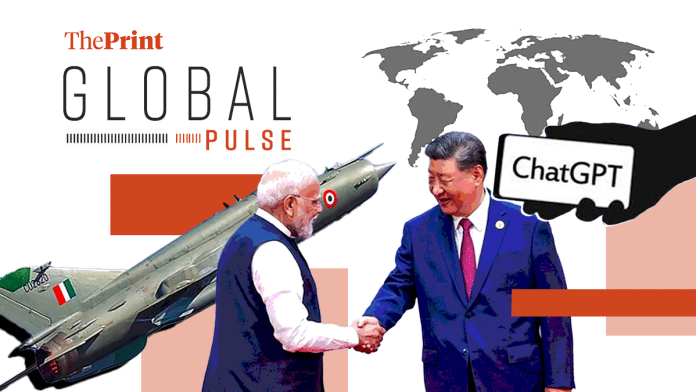New Delhi: The Soviet-designed MiG-21, seen as India’s most “iconic” warplane, is entering retirement. Marred with controversies, it witnessed “six decades of admiration—and later infamy,” writes Soutik Biswas in the BBC. From the early 1970s till 2012, 482 MiG crashes were reported—and 117 pilots were killed.
“The MiG-21 has a chequered legacy. The fighter was the mainstay of the IAF for over three decades and served in various roles in all of India’s conflicts since the 1965 Pakistan war,” Rahul Bedi of Eurasia Group, a geopolitical risk consulting firm, is quoted as saying.
Embarking on a sortie was no mean feat. The jet was notoriously uncomfortable and contained only a single seat and “the sky pressing in all-around’, writes Biswas. The air-conditioning was built for icy Russian climes as opposed to the blistering Indian summer.
“Originally a high-altitude interceptor built for speed and short-range climbs to reach the enemy over short distances, the MiG‑21 was quickly adapted by the IAF (Indian Air Force) for close combat and ground attacks,” says the report.
“By the 1971 war with Pakistan, it had become a formidable multi-role fighter, though in 1965 war it was still new and mainly an interceptor. The MiG‑21 also shaped India’s defence ties with Russia and helped jump-start its own aerospace industry.”
As the decades progressed, the MiG’s reputation suffered many blows. “The media was very unkind to the aircraft,” one pilot is quoted as saying.
“MiG‑21’s biggest challenge was its engine and high landing speed, which made descents tricky on short runways and contributed to many accidents—often blamed on pilot error. Attempts to retire the fighters were repeatedly stalled by inefficiency and bureaucratic inertia,” Bedi is quoted as saying.
In Foreign Affairs, Indian foreign policy specialist Tanvi Madan delves into an often overlooked facet of the India-China thaw. The smoothening of the relationship aside, differences between the two countries continue to persist—“whatever they might say at summits, the two countries still see each other as rivals”, she writes.
It’s an important thesis. Over the last year, decisive attempts have been made to repair fractures between the two countries. Most recently, Prime Minister Narendra Modi was clicked laughing at the Shanghai Cooperation Organization (SCO) summit—flanked by his Chinese and Russian counterparts. But, as Madan notes, the first sign of the thaw came in October 2024, at BRICS.
“Both Beijing and New Delhi were ready to change the temperature. China had been facing strategic and economic headwinds, including flagging growth, pressure from the United States, and concern in Europe about Chinese support for Russia,” she writes.
“India, for its part, did not want to fret about the prospect of further clashes along the border and instead wanted to focus on boosting its economic growth and bolstering Indian capabilities for the larger competition with China. And at the time, neither side knew who would next occupy the White House and how it might affect US policy toward China.”
But Madan goes on to reiterate—there are fundamental points of opposition between the two powers.
“Bilateral and regional problems also bedevil the relationship. India’s trade deficit with China has only increased in the last few years. And Beijing has demonstrated that it is willing to weaponise New Delhi’s dependence and to try to stymie India’s manufacturing and infrastructure ambitions,” she writes, listing examples like China restricting export to India of rare-earth magnets and fertilisers in 2024 and 2025, and the “massive dam project” planned on the Bramhaputra river.
AI giants OpenAI and Perplexity are expanding operations in India—opening up opportunities for India to serve as an AI backbone for the world. Companies are now focusing on building-multi-language models and increasing accessibility. India serves as “a single and inexpensive market” for AI models to train on, reports Krishn Kaushik in Financial Times.
“The multi-language approach enables ChatGPT to train its models for deeper penetration and replicate their learnings in other geographies,” says the report.
“I think it’s a really unique opportunity for India to lead the way,” Nick Turley, head of ChatGPT for OpenAI, tells FT.
The global giants are also benefiting from a lack of local competition, writes Kaushik. “While government-backed start-ups, such as Sarvam AI, are building domestic models, they have yet to develop consumer products that can compete with platforms like ChatGPT, Gemini, Perplexity, or China’s DeepSeek.”
(Edited by Nida Fatima Siddiqui)
Also Read: Nepal uprising ‘distraction’ for New Delhi & India’s top buyer of Russian oil escapes Trump’s wrath






